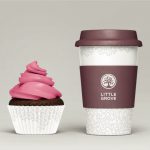It is an age old question with answers coming from everywhere you care to look.
Creativity is a delicate balance in business terms. In the market, having a great design only catches the eye but not the mind. It is a fine line between being creative and being obnoxious.
The solution is always a process.
A systematic process that starts from a brief. In the brief, you will receive a set of objectives to meet. This is sometimes the missing ingredient for creativity. Of course we all like to bring out the inner artist but sometimes that is easier said than done.
When working with our clients, we follow a step by step procedure that lets us land on the right design along with the right message to meet their goals. What does this mean in English?
Well, we like structure. So let’s start there. We begin with a brief from the client. This is a short meeting, usually around half an hour. In this brief, we ask several important questions such as the purpose of the collaterals, the intended market, who would use it, how would it be used, where would it never be used and a general discussion about the company’s goals through this process.
With an overview of the plan in hand, we then begin by taking a look at the company’s existing brand identity, asking for their brand manual whenever possible, and isolate the key elements of their brand image. This includes things such as color schemes, graphical motifs, key messages and tone of voice.
Through these two exercises, we now get a much more detailed understanding of the task at hand. We continue by drafting initial ideas, almost as a digital sketch, and share them along with our thought process for each variant of the design with our client. This helps both us and them. We get an even clearer picture while the client simultaneously crystallizes their idea around a central design idea or element.
During this phase, work on the intended message moves apace. The content side of things slowly begins to take on a more prominent role as the design now focuses around the content. What is usually best is to finalize the content before we draft one of the newer designs.
With this information in hand along with a pre-final draft of the content, we pick out the most promising motifs from the variants and combine them with their existing brand identity to come up with a unique design that, not straying too far from source material, is a fresh look for the company. Recognizable yet unique.
This moves us into the final phase of the project. In this portion, most of the work is done. The messaging is clear and focused with the right tone of voice. The design is almost complete with final touches remaining. This is the tricky part where revisions come into play. Sometimes a client would be overwhelmed with ideas for changes, Experience is what saves the day here. I will go into this specific part in more detail in a future post.
Closing out the project from this point is a matter of final touches and delivery. In this way structure, and not solely creativity, was the cause of our success. Although a lack of creativity is not good, a lack of structure is fatal to the project and client relationship.
That’s all for an overview of creating quality work for your clients. Our next post is going to talk about the R word…
Revisions…
At Admireworks we want you to experience what it feels when something is #tastefullydesigned. Get in touch with us!

